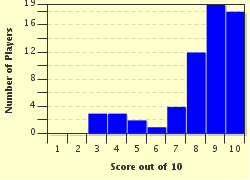Quiz Answer Key and Fun Facts
1. This line's official name was the New York, Chicago and St. Louis Railroad (NYC&St.L), and its reporting mark was NKP. But it was almost universally referred to as the "NPR". What did those initials mean?. Hint? Think of a five cent coin.
2. When completed in 1856, this railway was touted (however briefly) as the longest rail line in the world. The route stretched from Illinois to Louisiana - right down the center of the country. It was one of the many Class 1 railroads in the USA. This company's hotshot Chicago-New Orleans passenger train has been immortalized in a popular Arlo Guthrie ballad. Do you see what IC?
3. The PRR used a keystone as its logo. Although this carrier didn't have a monopoly on elegant travel between New York and Chicago, just about every kid in the USA has made "rent money" off the line - IF they hold the right cards!
4. Just hearing the town names that were represented by the initials "AT&SF" - or sometimes just "ATSF" - invokes images of old West cattle drives and Hopi & Pueblo villages. The ATSF, along with its regional neighbor Union Pacific, were two of the powerhouse Class 1 lines in the Southwest. Can you pick the AT&SF's formal name?
5. With road initials B&M, you might think digestive system, but you'll be off track! The actual name of this line that served the Northeast should bring images of baked beans and lobsters to mind.
6. The SAL operated along the Atlantic coast beginning in 1900. The company's formal name sounds like passengers should be riding on wings, but this line NEVER owned an airplane. Oh say can you "sea" the correct answer?
7. This East coast line linked Maryland ports with New York and Chicago. Would-be comedians often called it by a more "pungent" nickname, but can you choose the legitimate title of the B&O?
8. Since 1887 the UP's patriotic shield has displayed a blue top half (or "chief"), and 13 alternating red and white vertical stripes in the lower half (or "base"). UP continues as a Class 1 rail giant in the 21st Century. Knowing that this railroad was chartered during the Civil War by the Federal government - not the Confederate - should pacify your concerns.
9. The N&W specialized in hauling heavy coal drags from the mines of Kentucky and West Virginia to Hampton Roads Virginia. What was the N&W's full name? Follow Horace Greeley's directions, if you're not sure.
10. No more crazy monograms! You've read carefully, so this "closer" should be easy. ALL the choices below were Class 1 lines at some time in their history. BUT - which is the ONLY choice that remained an ACTIVE Class 1 railroad in 2017?
Source: Author
goatlockerjoe
This quiz was reviewed by FunTrivia editor
stedman before going online.
Any errors found in FunTrivia content are routinely corrected through our feedback system.

